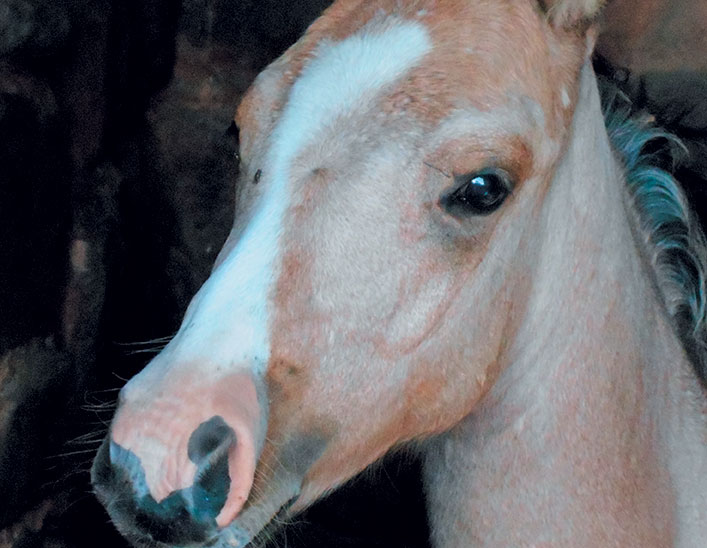
Photo: Dr Mac
The ultraviolet (UV) index is a measure of the damage that sunlight can cause to sensitive skin. Although the index differs from season to season, it’s particularly high on cloudless winter days when the air is dry.
Melanin is a dark pigment that protects the skin against UV light. The pink-coloured skin around the eyes, nose and genitals is therefore most likely to be burnt. Sunburn is a Type 1 photosensitivity; Type 2 photosensitivity can be caused through contact with chemicals or plants that irritate the skin; and Type 3 is due to liver damage.
In early cases of sunburn, areas of pink skin become red and painful to the touch, and severe cases show peeling, cracks, oozing blisters and scabs. Over time, the skin damage can result in squamous cell carcinoma, which is a rapidly growing cancer that is difficult to treat and inclined to metastisise.
Breeding with horses that have minimal areas of white skin on their faces, legs and genitalia will decrease susceptibility to sunburn.
Horses will protect themselves against sunburn by moving into the shade on sunny days, so shade-cloth shelters should be built if paddocks lack trees.
Zinc oxide
A UV-resistant face-mask, blanket or fly-sheet can be used for horses with large areas of unpigmented skin. Sun lotions formulated for humans can also be effective, but are expensive.
A cheaper alternative is zinc oxide; it is highly effective if rubbed in well on pink skin, particularly on the nose, two or three times a week. Some vets suggest tattooing the areas of pink skin, while others oppose this vociferously.
In my experience, it’s quite difficult to inject sufficient dye to prevent sunburn, unless the area of skin is very small.
Treatment
Severe cases of sunburn should be treated symptomatically by a vet, as there may be a secondary Type 1 allergic (wheal and flare) reaction, or an infection that will have to be addressed as well.
Cortisone and non-steroidal anti-inflammatory drugs, as well as antibiotics, may be needed.
Early skin cancer lesions can be burnt off using local anaesthetic and a tranquilliser. In some cases, general anaesthesia may be necessary.
Serum samples can be used to diagnose whether there is an underlying liver condition caused by plant poisoning.
Other types of burn
Poison ivy is an example of a plant that causes secondary photosensitivity through contact. Other plants such as Senecio and lantana can cause liver damage and tertiary photosynthesis.
Type 3 photosensitivity can also result from ingesting blue-green algae in contaminated water or fungal toxins in hay or concentrate rations.
Even treatment with tetracycline or sulphonamide stock remedies can result in tertiary photosensitivity.
Dr Mac is an academic, a practising equine veterinarian and a stud owner.













